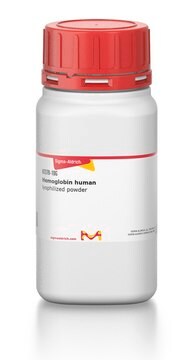I1411
ITX3
≥98% (HPLC)
Synonyme(s) :
2-[(2,5-Dimethyl-1-phenyl-1H-pyrrol-3-yl)methylene]-thiazolo[3,2-a]benzimidazol-3(2H)-one
About This Item
Produits recommandés
Pureté
≥98% (HPLC)
Forme
powder
Solubilité
DMSO: ≥4 mg/mL
Température de stockage
room temp
Chaîne SMILES
Cc1cc(\C=C2\Sc3nc4ccccc4n3C2=O)c(C)n1-c5ccccc5
InChI
1S/C22H17N3OS/c1-14-12-16(15(2)24(14)17-8-4-3-5-9-17)13-20-21(26)25-19-11-7-6-10-18(19)23-22(25)27-20/h3-13H,1-2H3/b20-13+
Clé InChI
SJMYMKPBODEZSH-DEDYPNTBSA-N
Actions biochimiques/physiologiques
Caractéristiques et avantages
Code de la classe de stockage
11 - Combustible Solids
Classe de danger pour l'eau (WGK)
WGK 3
Point d'éclair (°F)
Not applicable
Point d'éclair (°C)
Not applicable
Certificats d'analyse (COA)
Recherchez un Certificats d'analyse (COA) en saisissant le numéro de lot du produit. Les numéros de lot figurent sur l'étiquette du produit après les mots "Lot" ou "Batch".
Déjà en possession de ce produit ?
Retrouvez la documentation relative aux produits que vous avez récemment achetés dans la Bibliothèque de documents.
Contenu apparenté
Cyclic nucleotides, including cyclic AMP (cAMP), cyclic GMP (cGMP) and cyclic ADP-ribose, have been extensively studied as second messengers of intracellular events initiated by activation of GPCRs. cAMP modifies cell function in all eukaryotic cells, principally through the activation of cAMP-dependent protein kinase (PKA), but also through cAMP-gated ion channels and guanine nucleotide exchange factors directly activated by cAMP.
Notre équipe de scientifiques dispose d'une expérience dans tous les secteurs de la recherche, notamment en sciences de la vie, science des matériaux, synthèse chimique, chromatographie, analyse et dans de nombreux autres domaines..
Contacter notre Service technique







